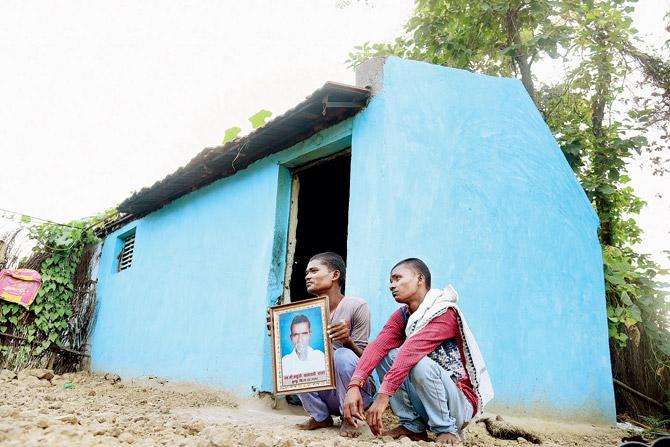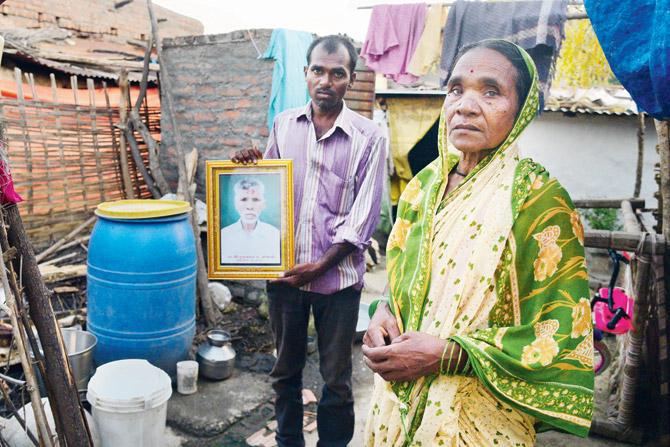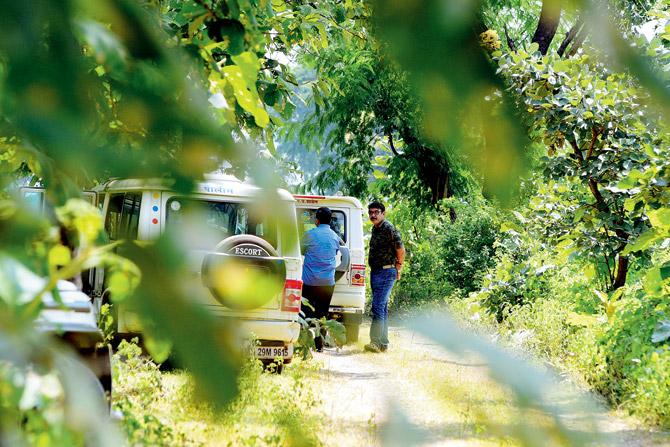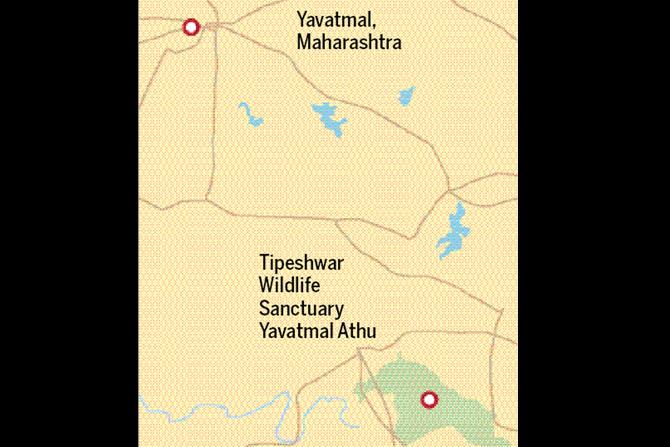As the ultimate man-animal conflict drama plays out in Yavatmal, complete with a notorious shooter, an expert team of 60, and guiding elephants, locals struggle with anger, grief and loss of livelihood

Pandharkawada: On August 4, 60-year-old Gulab Mokashe, a resident of Wedshi village, left in the morning along with his 55-year-old brother Nathu Mokashe and cattle from the village to the hilly areas surrounding the village's farms to graze in the shrubs. It was a regular day and, with an errand back in the village, the brother returned home at 6 pm.
ADVERTISEMENT
The sun was on its way down by 6.30 pm and Gulab was expected back. It would have been a regular day had it not been for the fact that Gulab didn't return home, prompting Nathu, at 8 pm, to walk to the local sarpanch's home to raise an alarm. Ankush Muneshwar, the village's 53-year-old sarpanch says that it was raining heavily that night and so, hoping that Gulab was delayed while taking shelter from the rain, they waited till 9.30 pm. And when that didn't happen, they called the forest department, which reached the village immediately. Night had fallen hard and it was too late to launch a search operation.

Pravin Waghuji Raut, 12, and Ganesh Waghuji Raut, 14, the sons of Waghuji Raut at their home in Vihirgaon. Waghuji had taken cattle to graze at 8 am on August 11. That evening when he didn’t return, locals launched a search and found his body a mere 200m from the village. T1 was spotted nearby. Pics/Shadab Khan
At 4 am, a team from the forest department accompanied by Nathu and 20 others from the village, including Muneshwar, set out on the two-hour climb to the top of the hill. The scene they encountered would be too gory to spell out in detail. Gulab's body, visibly eaten, had been left to the elements. It was the first of three killings in August by tigress T1 that launched a 60-person manhunt with human and elephant resources being called in from across not just Maharashtra, but also Madhya Pradesh to trap the nearly 170-kg threat. By the end of the month, T1 would have taken a total of 13 human lives since July 2016.

Each morning, Deputy Conservator of Forest MK Abharna discusses the plan of action. Every team comes back to her with updates at regular intervals. "Around 6 am, the two elephants followed by our foot-patrolling team visits the forest looking for pugmarks. The camera trap teams also check the cameras based on which we plan our day. The expert team from MP, along with vets are already there," she says
Yavatmal district lies on the eastern fringes of Maharashtra, a good 700 km from Mumbai. And Wedshi lies on the boundary of the Pandharkawada (a fragmented forest) along with others such as Ralegaon, Kelapur, Sarati and Pandarkawada. For the last two years, the residents of these villages have been haunted by a now five-year-old tigress named T1 who moved from the nearby Tipeshwar Wildlife sanctuary, around 70 km from what's now being called a conflict zone, as a two-year-old. Not much is known about her. It is speculated that her mother pushed her out and, in search for a territory of her own, she moved to Pandharkawada where she now roams with two 10-month-old cubs. Officials fear she might be teaching the cubs to hunt and this might make them less fearful of humans too.

MK Abharna
There's a tiger in the forest as well, but he isn't the problem at hand. The manhunt for the tigeress would have begun in January 2018, had the forest department had enough evidence at hand to prove that it was indeed T1 that had led to loss of human lives. Then the Principal Chief Conservator Of Forest, also the chief wildlife warden of the state, AK Mishra had issued orders after T1 claimed a resident of Loni village on January 27. However, at the time a Nagpur-based activist Dr Jerryl Banait approached the Bombay High Court pleading against the action as the officials had no evidence to pursue their case. That came with Gulab.

Gulab Mokashe's wife Shakuntala at their home in Wedshi village in Yavatmal district. On August 5, the grazer's body was found on the hills where he usually took the cattle. It was T1's first kill. Pics/Shadab Khan
The tigress, having eaten 60 per cent of his body, had left enough of her DNA around the kill area - which also matched with five other kill sites - and camera trap images confirming her presence in the forest. That she had eaten a human helped classify her as a man-eater. But, that would still not move things quickly enough. It took the loss of two more lives to get a final Supreme Court nod - the HC order was challenged in court by Dr Banait and Sarita Subramaniam from the Mumbai-based Earth Brigade Foundation - saying human life is important as well.

Pravin Waghuji Raut, 12, and Ganesh Waghuji Raut, 14, are the sons of Waghuji Raut, 60, T1's second victim in August from Vihirgaon village. The only bread winner in their family is their mother Renuka, 39
At the basecamp outside Pandharkawada forest, near Sarati village, are 10 tents that are currently serving as the safe space for the 60-member team that the forest department has out together to catch T1. There's the ground staff, a patrolling team, members of the state's Special Tiger Protection Force (STPF) four vets from Madhya Pradesh who will hopefully tranquilise T1 when they find her (see box: Protocol to hunt a man-eater) and members from various NGOS from the state that have put up 80 camera traps inside the thicket and rush every morning at 6 am in the hope of finding T1's location. They return by 9.30 am with data from the 70 sq km area, which T1 now occupies.
On the basis of her activity, they plan the course of action of the hunt that will continue till the afternoon heat makes it impossible for the human beings and the four elephants they have hired to help them walk through the talk and dense foliage of the lantana plant. With the bushes running as high as 14 feet, thanks to the monsoon, humans can't make their way on foot. It's not easy with elephants, but it's the best option available considering the absence of roads and the possibility that T1 could easily hide anywhere, invisible to those hunting her.

An official, not willing to be identified, says, "She's a very clever and elusive tigress who is not just avoiding trap cages, but our teams as well. The terrain is replete with ravines and gorges and so it becomes difficult to reach every nook and cranny."
But, if the humans huddled together at the base camp, armed with their tranquilisers and guns, are wary of T1, it's the villagers' wrath that they are downright afraid of.

The fragmented forest of Pandharkawada is near the Tipeshwar Wildlife Sanctuary from where it is believed that T1 walked as a young two-year-old
And it was the 13th kill on August 28 that brought the message home: Patience lasts only so long. Nagorav Junghare of Pimpleshende village, 20 km from Wedshi, had taken his cattle to graze on his farm. The farm borders the forest, but the cattle remained on his farm. After lunch, he went to the stream that cuts through his land for a sip of water. It was the last time he was seen.
At 6 pm, two of his cows, as was their routine, returned home, without Junghare. A local villager Gajanan Panchbudhe went to the farm, along with others to look for him. At the stream, they found Junghare's body, half eaten and discarded by T1. The kill, they believe, must have happened in the afternoon around 2 pm or 3 pm. After all, tigers, unlike leopards, are neither nocturnal nor have any specific times one can watch out for.

The forest department has now assembled a team of 60 that have set up base camp outside the forest from where they enter the forest, set up camera traps and check for pug marks to find T1
It took a usually prompt forest department an hour to arrive at the spot. When they did, two vehicles were damaged by the angry mob of 60 villagers. It was again up to the local honorary wildlife warden Ramzan Virani to calm the villagers down. He had done this a little over a fortnight ago, at Vihirgaon, when a mob of 200 had gathered after Waghuji Raut, a grazer from their village, became another victim.
For the last two years, Virani has been the forest department's on-ground 'fire fighter', soothing angry nerves, visiting villages so that the human-predator conflict doesn't take an ugly turn.

Wedshi's sarpanch Ankush Muneshwar says the forest department should have acted sooner. The thick foliage in the forest during the monsoons has reduced chances of tranqulising the tigress. Visibility would have been much higher in the summer
His awareness pitches have been to ask the villagers not to enter the protected areas in the forest, where they often take their cattle for grazing, and instead stick to the fringes. "If your cattle graze away, take help of the forest department and other villagers when entering the forest," he says. The forest department has deployed two private van mazdoors to act as body guards for the villagers when entering the forest is unavoidable. Of course, their help isn't always taken. At Pimpleshende, Virani pleaded to the villagers to let the forest department do its job. After all, if the officials didn't take hold of the body, collect samples for DNA testing, how could it prove that a life had been lost to a tigress? How would the bereaved family get a compensation of Rs 10 lakh?

Graphic/Uday Mohite
Talk of money may seem crass when 13 lives have been lost, but T1's menacing presence has hurt the villagers of Yavatmal where it hurts the most - livelihood. The farms here subsist on cotton, soybean and toor and harvest season is around the corner. For the last four days, says Wedshi villager Raghuji, farmers haven't tended to their lands as the forest department has asked them to stay away. "We are economically dependant on farming. If we continue to stay away from the farms, our crops will be destroyed thanks to herbivores like wild boar and neelgai who will raid the crops," says Muneshwar. Here, even the 400 cattle haven't been sent grazing in days, and without much fodder at home, they've begun starving too. There's no sign of activity in the village. Humans are huddled in corners awaiting only one news: T1 has been caught.
Protocol to hunt a man-eater
If an animal is classified either a human killer or man-eater, the priority is to find it, tranquilise it and keep it in a zoo. If tranquilising isn't possible, only then can a call to shoot be taken.
Also Read: Trigger-Happy Shooter Joins Hunt For Rogue Tigress T1
Catch up on all the latest Mumbai news, crime news, current affairs, and also a complete guide on Mumbai from food to things to do and events across the city here. Also download the new mid-day Android and iOS apps to get latest updates
 Subscribe today by clicking the link and stay updated with the latest news!" Click here!
Subscribe today by clicking the link and stay updated with the latest news!" Click here!






